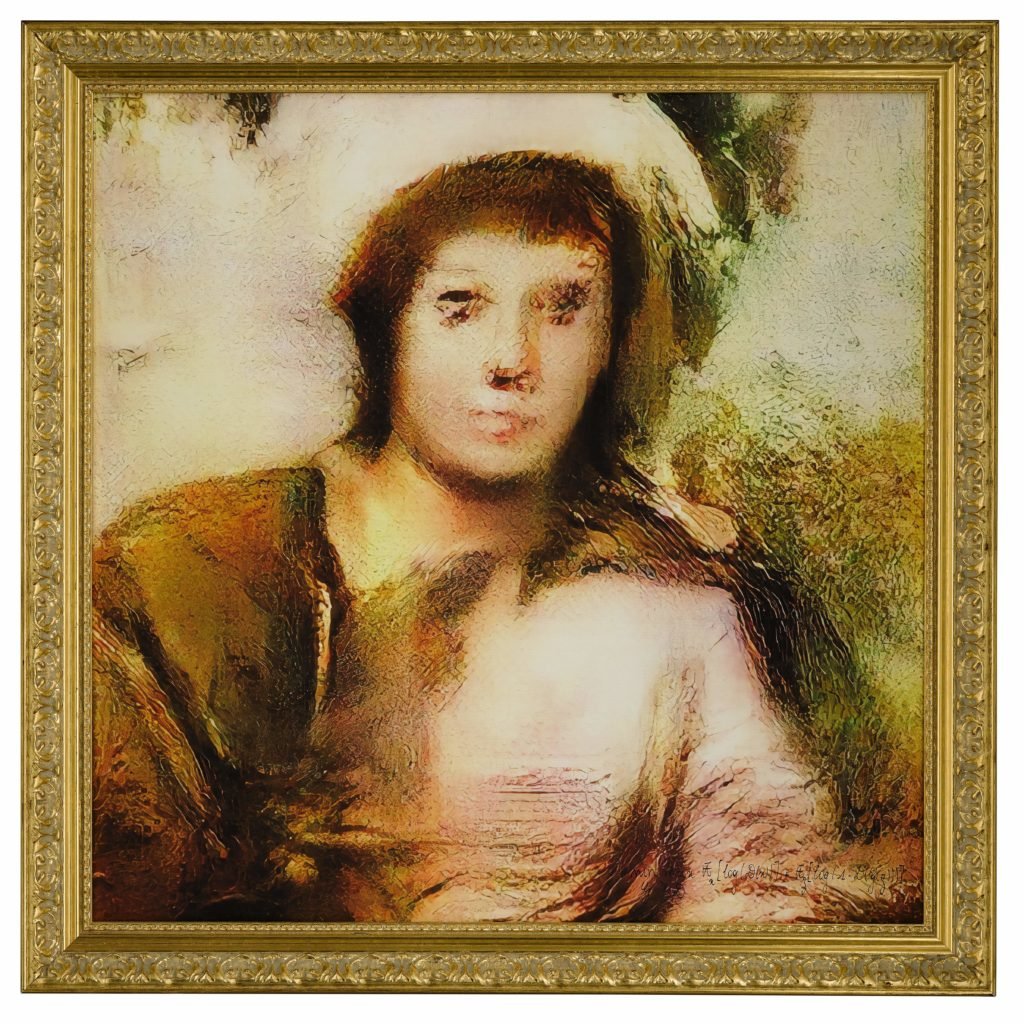Art & Tech
Most People Can’t Tell the Difference Between Art Made by Humans and by AI, a Rather Concerning New Study Says
The study was inspired by news of an AI-generated artwork selling at auction for $432,500.

The study was inspired by news of an AI-generated artwork selling at auction for $432,500.

“There is a battle rising between humans and machines.”
No, that’s not a voiceover from another Matrix or Terminator movie. That’s the first line of a new study on how humans perceive artworks made by computers versus those made by humans, and, according to the findings, published in the journal Empirical Studies in the Arts, things don’t look great for the humans.
When the researcher Harsha Gangadharbatla saw the headlines three years ago about a painting created via artificial intelligence by the collective Obvious selling for $432,500 at Christie’s, he didn’t just shake his head at the price. He wondered what this might teach us about how humans perceive art.
“For me, the interesting thing was the role of humans in producing art,” Gangadharbatla, a professor of advertising at the University of Colorado, Boulder, told Artnet News. “I always assumed there was a soul that the human pours into the work. When a machine creates the work, how do people interpret it? Are they still moved? What role does the knowledge of who produced the artwork play in how it is perceived?”
So Gangadharbatla set up an online survey that asked people to distinguish between artworks generated via AI and those created by human hands. He used images of art made by two humans, Tom Bailey of Massachusetts and Indiana’s Steve Johnson, and art created by a young artist whose algorithms produce images that appear indistinguishable from the artists’ work.
The landscapes, both machine- and human-generated, are anodyne impressionistic landscapes. The machine-made abstract work is hazy and pastel-hued, with an allover composition; the human-made version is roughly geometric and has strongly contrasting reds and blues.
While previous studies have focused on whether experts can distinguish machine-made from human art, says Gangadharbatla, this study zeroed in on everyday observers. Some 211 subjects recruited on Amazon answered the survey. A majority of respondents were only able to identify one of the five AI landscape works as such. Around 75 to 85 percent of respondents guessed wrong on the other four. When they did correctly attribute an artwork to AI, it was the abstract one. (So maybe the man on the street thinks abstract painters are robots! A subject for a future study, perhaps.)
Gangadharbatla doesn’t just find these results unflattering for humans—he finds them worrisome.
“I come from the advertising world, where a lot of research is looking at the role of technology,” he said. “When I looked at the news about the artwork being sold at Christie’s, I thought, this has huge implications for the advertising world. Already, the role of humans is shrinking every day and the role of big data is growing. So creativity is the last bastion, the line that humans hold in advertising.”
What’s the next frontier for computer-made art? For now, Gangadharbatla says, when a computer creates an artwork, you know exactly how it did it. But that may not be the case in the future.
“What would be interesting is if we could find computers producing artworks and we don’t know how they did it,” he said. “I’m fascinated with that. That would be truly creative and truly scary. But then, artworks are harmless. They’re not trying to persuade you, but advertising is. If computers start producing persuasive messages and they’re put in front of people, what effect would that have?”